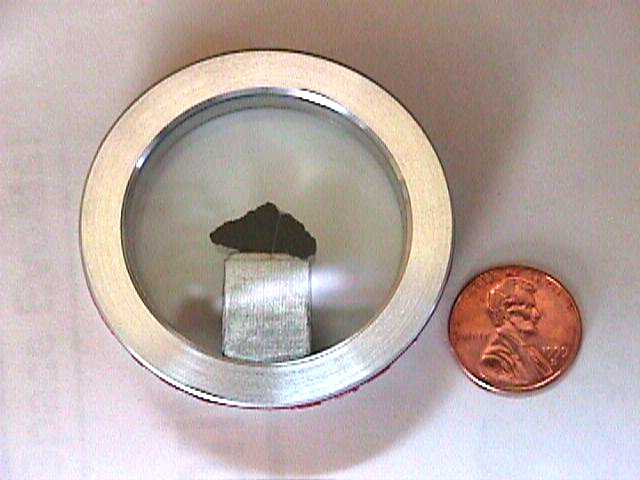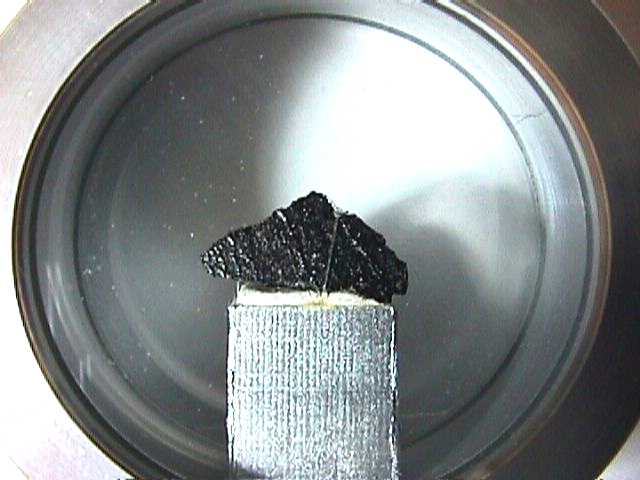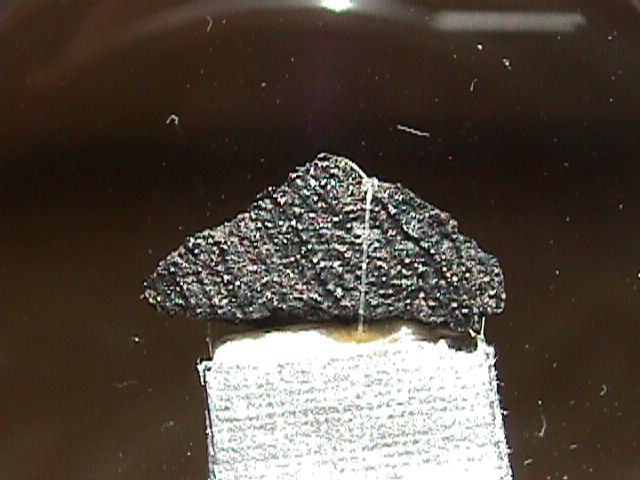
LAFAYETTE, INDIANA
, SNC; Identified in the Purdue University collection in 1931The Lafayette Meteorite is one of the rarest meteorites known, and certainly originated on Mars. Composed primarily of monoclinic pyroxine , similar to the mineral diopside, this extremely rare meteorite of about 800 grams was found in the Purdue University collection in 1931. For years it was in their collection identified not as a meteorite but as a "glacial pebble." But according to H. H. Nininger it may have been a witnessed fall, for in his investigation of it he found that some years earlier a black student is said to have donated it to the university saying that he saw it fall a few yards from where he was standing. Years later, and after it had been identified, it was thought to be related to the Nakhla Meteorite that fell in Egypt in 1911. Speculation abounded that it might have been a transported specimen from that fall. Later, in 1980 analysis by J. L. Berkley, et al. revealed that it is distinct from Nakhla. The differences reside primarily in the hydrated minerals in this unusual meteorite. Water extracted from these hydrated minerals reflect rare gas ratios that indicate Martian origin. In the Lafayette Meteorite these hydrated minerals have iron oxide shells that some speculate might be related to, and evidence of biologic activity on Mars even as recently as 700 million years ago. (Kargil, USGS).
Martian meteorites are thought to have been blown from the surface of Mars during asteroid impacts as recently as 10 to 15 million years ago.
The main mass of the Lafayette Meteorite now resides in the Smithsonian Meteorite Collection, and the following pictures are of a .87 gram sample obtained in 1981 from the previous holder of the main mass,the Chicago Field Museum.

.87 gram fragment of the Lafayette Meteorite in its aluminum and glass retaining cell.
. 
Enlargement of fusion crusted Lafayette fragment and its retaining cell.

Enlargement of .87 gram fragment's fusion crusted side showing the parallel flow lines that were in fact radial lines on the original oriented main mass, considered by many to have been one of the most beautifully oriented meteorites ever found. Length of specimen is 1.2 cm.

Opposite side of .87 gram specimen showing cut face and rough break. The color of this meteorite is a deep drab olive green with brown (hydrated) crystals. It has no free malleable iron, no rust spots and is not magnetic. Hydrated minerals found in this meteorite upon analysis reveal the signature of the Martian atmosphere with regards to zenon- krypton ratios. Age dated at about 1.6 billion years, the Lafayette meteorite is much younger than most meteorites, which have age dates of about 4.55 billion years. This alone is clear indication that this and the 14 other meteorites of the SNC class came from a planetary body (Mars) rather than an asteroid.
It is unlikely that this type of meteorite will be identified in the field unless observed to fall as it is so much like earth rocks. The only outward evidence of its cosmic nature is the presence of a distinct fusion crust. It was the glassy fusion crust that brought it to the Chicago Field Museum's curator's attention. There are to date 15 SNC (Shergotty, Nakhla, Chassigny) meteorites known, and the most recent, the paired Los Angeles 001 and 002 meteorites were initially identifed by the finder solely by the presence of fusion crust alone.
A fusion crust is the primary characteristic in identifying freshly fallen meteorites and is often the layman's only clue that indicates a cosmic origin.
For this reason being able to recognize a fusion crust is very important in sorting out meteorites from "meteorwrongs."
(Please use the "BACK" option in your browser to return to the main page)
Or you can link to more information on the Lafayette Meteorite and other Martian meteorites at: